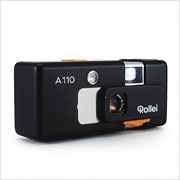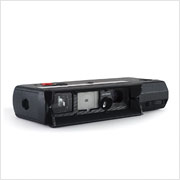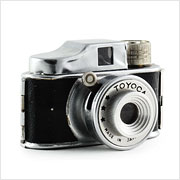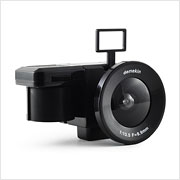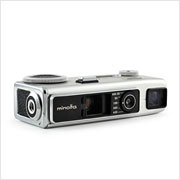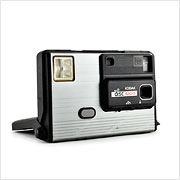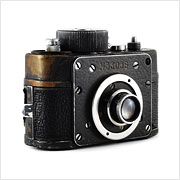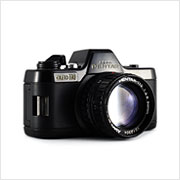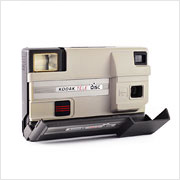Rollei A110
The Rollei A110 is a high-end subminiature camera introduced by Rollei in 1974. After nearly ten years of the Rollei-16, which used the company’s own proprietary 16mm film cassette, Rollei decided to abandon the ultimately unsuccessful format and tasked legendary designer Heinz Waaske (who designed other innovative and groundbreaking models such as the as the Rollei 35, Rollei A26, and Rolleimatic) to create the A110 as the first of a new generation of subminiatures to use Kodak’s vastly more popular 110 film cartridge instead.

